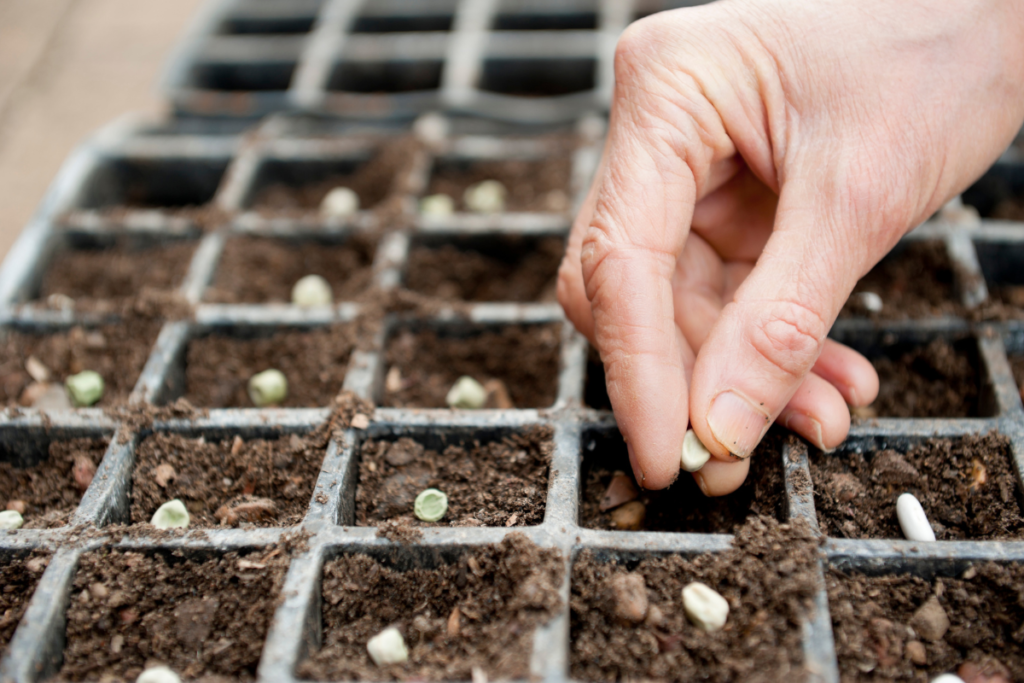Seed Tips
Top 5 Cold Hardy Seeds to Plant After Winter
Winter may have the garden in hibernation, but it’s never too early to start planning for the next growing season. Whether you’re looking to get a jump start on your spring garden or continue growing through early spring, there are a variety of cold-hardy seeds you can plant right after winter. These plants can withstand chilly temperatures and thrive when the frost starts to melt.
Read more:8 Vegetables to Plant in Spring for a Summer Harvest
Top 5 Cold Hardy Seeds to Plant After Winter

Here are the top 5 cold-hardy seeds to plant after winter to ensure a fruitful and vibrant garden:
1. Peas (Pisum sativum)
Peas are one of the best choices for early spring planting, as they thrive in cooler temperatures. These vegetables mature quickly, usually within 60 to 70 days, and can withstand temperatures as low as 25°F, making them ideal for planting right after winter. While mature plants are frost-tolerant, keep in mind that flowers are more susceptible to heavy frost. Plant peas in well-draining soil with full sun exposure and make sure to space them out to allow for proper growth. Varieties like ‘Green Arrow’ and ‘Lincoln’ are great picks for a late winter or early spring harvest.
2. Spinach (Spinacia oleracea)
Spinach is another great vegetable to plant after winter, as it is a true cool-weather crop. It can tolerate light frosts and even snow, which helps improve its flavor. Spinach is quick to mature, with some varieties ready for harvest in as little as 30 days. It grows best in well-drained, loamy soil and requires full to part sun. Varieties like ‘Auroch’, ‘Hammerhead’, and ‘Space’ are particularly cold-hardy, making them perfect for early spring planting.
3. Kale (Brassica oleracea)
Kale is a hardy green that thrives in cooler temperatures and can be planted as early as late winter. This vegetable is known for its cold tolerance and can survive temperatures as low as 10°F once established. Light frost actually enhances the flavor of kale, making it an ideal crop for early spring harvests. Plant kale in nutrient-rich, well-drained soil with at least six hours of sunlight per day. Varieties such as ‘Winterbor’ and ‘Lacinato’ are excellent choices for planting after winter.
4. Carrots (Daucus carota)
Carrots are another versatile crop that can be planted after the winter chill starts to fade. These root vegetables are cold-tolerant and can handle temperatures down to 15°F, making them suitable for early spring planting. Carrots prefer loose, sandy soil and need consistent moisture throughout their growing season. If you’re looking for a variety that can thrive after winter, consider planting ‘Nantes’ or ‘Danvers’. These varieties grow well in cold climates and are perfect for late winter sowing.
5. Broccoli (Brassica oleracea var. italica)
Broccoli is a cool-season crop that can be started right after the cold of winter begins to subside. It thrives in temperatures between 40°F and 70°F, making early spring planting ideal. Broccoli is known for being frost-hardy, with some varieties able to withstand temperatures down to 26°F. This vegetable grows best in full sun and well-fertilized, loamy soil. Varieties such as ‘Arcadia’ and ‘Waltham’ are great for planting after winter, providing a bountiful harvest in early spring.
These five cold-hardy seeds are perfect for gardeners eager to start planting after winter. By choosing the right varieties and providing the necessary care, you can enjoy a productive and extended harvest season. Happy planting, and don’t forget to sign up for our gardening newsletter for more tips and tricks!
Frequently Asked Questions
1. What are the best cold hardy seeds to plant after winter?
Some of the best cold hardy seeds to plant after winter include peas, kale, carrots, collard greens, and broccoli. These vegetables are frost-tolerant and thrive in cold conditions.
2. When is the best time to plant cold hardy seeds after winter?
The ideal time to plant cold hardy seeds is when the soil warms up after winter, typically in late winter or early spring. This is when these crops can grow effectively without the risk of severe frost damage.
3. How low of temperatures can cold hardy vegetables tolerate?
Most cold hardy vegetables can withstand temperatures ranging from 15°F to 25°F (-9°C to -4°C). However, each vegetable has a different cold tolerance, so it’s important to choose varieties suited to your climate.
4. How can I protect cold hardy plants from frost at night?
To protect plants from frost, you can cover them with a layer of mulch or use frost cloths. This helps trap heat and shields the plants from freezing temperatures during the night.
5. Can I grow cold hardy vegetables in containers?
Yes, many cold-hardy vegetables like kale, broccoli, and carrots can be grown in containers. Just ensure the containers have proper drainage holes and use well-draining soil for optimal growth.
6. Can cold hardy seeds survive the winter?
Some cold hardy seeds, like carrots, peas, and kale, can survive through winter with proper care, especially when mulched heavily and protected from extreme freezing temperatures.

